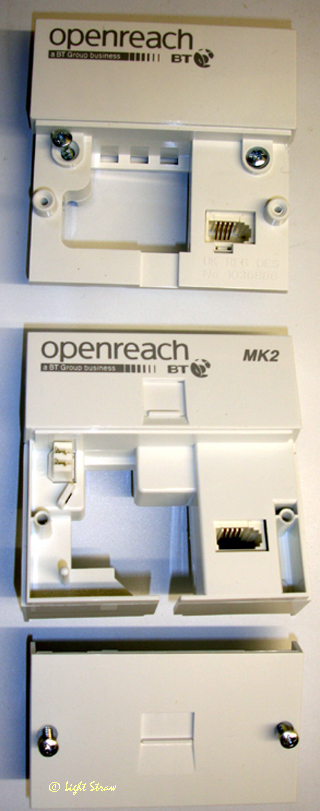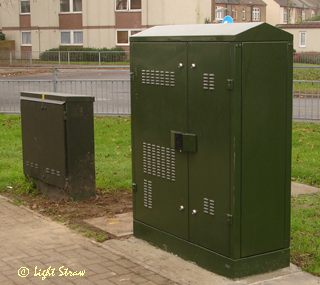 |
Fibre broadband delivers superfast Internet and TV services to the home... |
From the appearance of home computers in the 1980s which used 'dial-up' modems to 'bulletin boards', the available line speeds (over copper) gradually increased from (typically) 9.6 kb/s up to a surprising 8 Mb/s (max), as fast access to the Internet became a necessity.
The speed of broadband drops off very quickly as the line distance from the telephone exchange increases. To improve line speeds, fibre optic cables are laid from the telephone exchange to a new cabinet which is situated close to the subscribers premises. Thus, 'Fibre To The Cabinet' (FTTP) can deliver speeds of up to 40 Mb/s under ideal conditions. This product was marketed by BT as Infinity. A later upgrade to the technology allowed speeds of up to 80 Mb/s (Infinity 2).
How it works
A normal broadband connection via an ADSL superimposes the broadband signal over the entire PSTN line and uses filters at each end to separate the broadband signal from the telephone speech and signalling. With FTTC, the broadband signal is added to the subscriber's line (via filters) at the local street cabinet (Primary Connection Point). A filter in the home Linebox separates the telephone part of the circuit.
 |
The subscriber's line (A & B pair) terminates on the NTE5 which contains the bell capacitor. |
 |
PCP on left and large Huawei DSLAM cabinet on right. |
All logos and trade marks are the property of their respective owners and are used on the Light Straw site(s) for review only. Students and researchers are recommended to make their own independent enquiries as to the accuracy of the information contained therein.